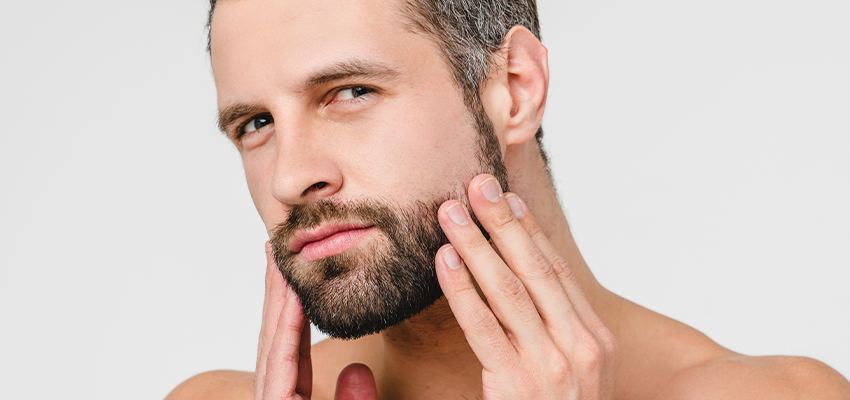Beard Transplantation: A Solution to Thinning Beards
Beard transplantation involves transplanting hair follicles from the scalp or other parts of the body to the beard area, resulting in a fuller and more aesthetically pleasing beard.
Thinning or patchy beards can be a source of frustration and self-consciousness for many men. Fortunately, beard transplantation has emerged as an effective solution to address these concerns.
Beard transplantation is suitable for person who have thinning beards, patchy beard growth, or facial hair loss due to genetics, scarring, trauma, or medical conditions. The ideal candidates for this procedure are those with a healthy donor area, typically the back or sides of the scalp, from which hair follicles can be harvested for transplantation.
Advantages of Beard Transplantation Procedure
Beard transplantation provides natural-looking results, as the transplanted hair follicles are sourced from the person's own scalp or body. The transplanted hair will continue to grow and can be trimmed and styled like natural beard hair. The results are permanent, allowing men to enjoy a fuller beard for the long term.
Beard transplantation allows for the customization of beard shape, density, and design, according to the individual's desired aesthetic outcome. The procedure enables the surgeon to carefully place each hair follicle, ensuring a natural and harmonious appearance that complements the facial features.
Beard transplantation is a minimally invasive procedure that leaves minimal scarring. The donor area incisions heal quickly and are easily concealable under the surrounding hair. The transplant area may have small scabs or tiny red dots immediately after the procedure, but these usually resolve within a few days.
For many men, having a fuller beard can significantly enhance self-confidence and self-esteem. Beard transplantation can help patients achieve the beard they desire, allowing them to feel more confident and satisfied with their appearance.
In addition to beard transplantation, mustache transplantation has also gained popularity as a procedure to address thin or patchy mustache growth. This specialized hair transplant procedure focuses specifically on enhancing the density and shape of the mustache area, allowing men to achieve a more defined one.
How is Beard Transplantation Performed?
At the beginning of beard transplantation, the surgeon selects a suitable donor area, usually the back or sides of the scalp, and extracts hair follicles using either the FUE (Follicular Unit Extraction) or FUT (Follicular Unit Transplantation) method. FUE involves individually extracting follicles, while FUT includes removing a thin strip of scalp and dissecting it into singular grafts.
The harvested hair follicles are carefully prepared for transplantation. They are sorted and trimmed to ensure optimal graft quality and survival. The surgeon makes tiny incisions or slits in the beard area where the hair follicles will be transplanted. These cuts are made at specific angles and directions to mimic the natural growth pattern of beard hair.
The prepared hair follicles are meticulously transplanted into the recipient area using specialized instruments. The surgeon takes into account the desired density and aesthetic outcome, ensuring that each follicle is placed at the correct depth and angle for natural-looking results.
After the procedure, the patient will receive instructions on post-operative care, including prescriptions on cleansing the transplanted area, applying any medications, and avoiding activities that may disrupt the healing process.
Recovery Process for Beard Transplantation
Immediately after the beard transplantation procedure, the patient may experience mild redness, swelling, or small scabs in the transplant area. These are normal and will gradually heal over the next few days.
During the first week, the patient should follow the post-operative care instructions provided by the surgeon. This may include;
- Gentle cleansing of the transplanted area
- Avoiding direct sunlight
- Refraining from scratching
- Not picking at the scabs
Within a few weeks after beard transplantation, the transplanted hair follicles will enter a shedding phase. This is a natural part of the hair growth cycle, and it is important not to be alarmed. Patients can expect to see new beard hair starting to grow within a few months. The hair will continue to thicken and mature over the course of several months.
Health International, a brand of Acıbadem, offers the highest quality and safest beard transplantation to its patients. We are with you with a professional team for all your needs not only during the treatment but also before and after periods. Please contact us via our contact information.

